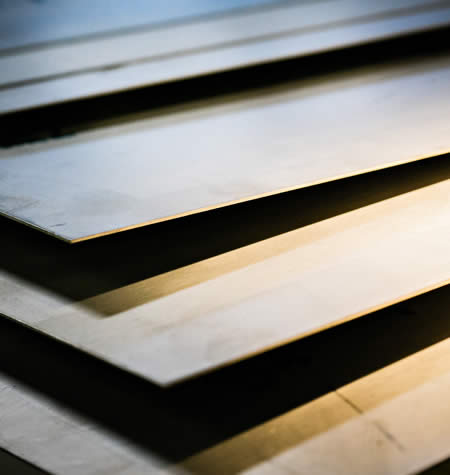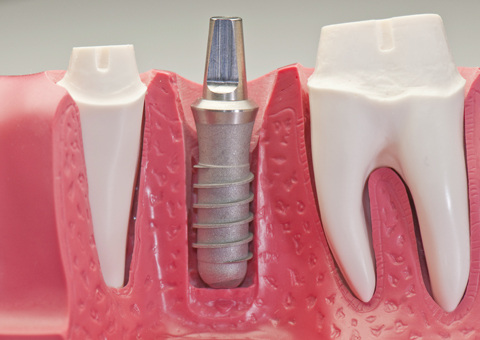Grade 5 Titanium Guide
Ti-6Al-4V
 Overview: Grade 5 titanium is the superstar of titanium alloys – often referred to by its composition Ti-6Al-4V (meaning ~6% Aluminum and 4% Vanadium). It's by far the most widely used titanium grade, comprising the majority of titanium tonnage in aerospace, biomedical, and high-performance industries. If someone says “titanium alloy," they most likely mean Grade 5. This alloy achieves a superb combination of high strength, low weight, and good corrosion resistance. It's also known as Ti 6-4 or Grade 5 and sometimes by spec designations like AMS 4911 (for sheet/plate) or AMS 4928 (for bar).
Overview: Grade 5 titanium is the superstar of titanium alloys – often referred to by its composition Ti-6Al-4V (meaning ~6% Aluminum and 4% Vanadium). It's by far the most widely used titanium grade, comprising the majority of titanium tonnage in aerospace, biomedical, and high-performance industries. If someone says “titanium alloy," they most likely mean Grade 5. This alloy achieves a superb combination of high strength, low weight, and good corrosion resistance. It's also known as Ti 6-4 or Grade 5 and sometimes by spec designations like AMS 4911 (for sheet/plate) or AMS 4928 (for bar).
Mechanical Properties:
In the standard annealed condition:
Ultimate Tensile Strength: ~130–140 ksi (895–965 MPa) typical. Minimum spec for aerospace Grade 5 is usually 130 ksi (895 MPa). With heat treatment (aging), it can exceed 160 ksi (1100 MPa).
Yield Strength: ~120 ksi (828 MPa) annealed. (Can be raised to ~145 ksi with solution treatment and aging.)
Elongation: ~10–15%. It's not as ductile as CP grades, but still offers reasonable toughness.
Modulus of Elasticity: ~113 GPa (16.4 Msi) – slightly higher than CP due to alloying but roughly the same order.
Hardness: Approximately Rockwell C 30–34 in annealed condition. It can harden to RC 40+ with aging heat treatment.
Density: ~4.43 g/cc (0.160 lb/in³). Interestingly, Grade 5 is a little less dense than pure titanium because aluminum is lighter (the alloying brings density down slightly).
Chemical Composition:
Ti ~90%, Al 6%, V 4% (that's why often written 6Al-4V). Plus minor impurities like O (max ~0.20%), Fe (max ~0.4%). Aluminum stabilizes the alpha phase, vanadium stabilizes the beta phase – giving a mix of both at room temp (so Grade 5 is an alpha-beta alloy).
Comparison to Other Grades:
Vs CP Grades: Grade 5 is much stronger but less malleable. For example, as shown in the chart below, its tensile strength (~900+ MPa) dwarfs that of Grade 2 (~345 MPa). However, it is not as formable – you generally cannot cold-stamp or deep-draw Grade 5 like you could Grade 2. Also, Grade 5 is somewhat less corrosion resistant in extremely harsh chemical media than CP grades, but for most environments (saltwater, body fluids, etc.) it's practically just as good.
Vs Other Alloys: Grade 5's strength is on par with some beta alloys, but Grade 5 has the advantage of widespread availability and better weldability than most beta alloys. Some newer alloys (like Grade 23 Ti-6Al-4V ELI or Grade 5 with heat treat) focus on toughness or strength, but essentially Grade 5 is the baseline. Grade 9 (Ti-3-2.5) is weaker (~620 MPa UTS) but more formable; Grade 23 is basically Grade 5 with tighter impurity control for medical use (similar strength). If you need something stronger than Grade 5, you're usually looking at beta alloys or advanced alpha-beta like Ti-6246, but those are specialty.
Vs Steel / Aluminum: Grade 5 is nearly as strong as the strongest steels but at half the weight. It's also far stiffer and stronger than aluminum alloys (twice the strength of 6061, on par or above 7075, at 60% heavier weight). This is why in aircraft, Grade 5 titanium can replace steel parts to save weight without sacrificing strength. It also retains strength to fairly high temperatures (good up to ~400°C continuous, whereas aluminum loses strength much earlier).
Grade 5 vs. other grades – Tensile Strength: The chart highlights Grade 5 (blue bar) towering above CP grades in terms of tensile strength (around 950 MPa in this comparison). It truly enables designs that need high load-bearing capacity at low weight. This strength, combined with good fatigue and crack propagation resistance, is what makes Grade 5 the default choice for critical titanium components.

Common Forms & Applications:
Available Forms: Grade 5 is produced in a wide array of mill forms. TMS supplies sheet and plate (commonly used in aerospace panels, armor, etc.), round bar and rod (for machining parts or forging stock), block, tubing (though Ti-6Al-4V tube is often only available in certain sizes due to fabrication difficulty), and wire (used for springs or medical devices). Grade 5 fasteners (screws, bolts) are extremely common in racing and aerospace – you can find titanium screws made from Grade 5 to replace steel bolts for weight savings.
Aerospace: This is Grade 5's home turf. Think jet engines (discs, blades, compressor wheels), airframe brackets, landing gear components, missile and spacecraft parts – Grade 5 is everywhere. For instance, the Boeing 787 Dreamliner uses tons of Ti-6Al-4V in its wing and engine pylons. The alloy's combination of strength and temperature performance (usable up to about 600°F) makes it ideal for many engine components that see stress and heat.
 Medical: Known as ASTM F136 when used for implants, Grade 5 (specifically the ELI variant, which stands for Extra-Low Interstitial, also called Grade 23) is heavily used for bone implants, screws, prosthetic devices, dental implants – you name it. It's biocompatible and strong enough to support loads in the body (like hip joint stems, which are typically Ti-6Al-4V). Many surgical tools are also made of Grade 5 because it's non-magnetic and can be sterilized without corrosion.
Medical: Known as ASTM F136 when used for implants, Grade 5 (specifically the ELI variant, which stands for Extra-Low Interstitial, also called Grade 23) is heavily used for bone implants, screws, prosthetic devices, dental implants – you name it. It's biocompatible and strong enough to support loads in the body (like hip joint stems, which are typically Ti-6Al-4V). Many surgical tools are also made of Grade 5 because it's non-magnetic and can be sterilized without corrosion.Industrial: Grade 5 pops up in oil & gas (valves and pressure vessels that need high strength and corrosion resistance), in automotive (Formula 1 and high-end automotive parts like connecting rods, exhaust systems, lug nuts), and even in power generation (turbine blades in smaller turbines). It's also used in marine applications for things like propeller shafts or subsea pressure housings – handles seawater well and carries high loads.
Consumer & Recreation: High-performance bicycle frames often use Grade 5 titanium tubing for the main structural tubes – this yields a very light but stiff frame. Sporting goods like golf club heads (drivers) have used Grade 5. Premium eyewear, watches, and electronic device enclosures sometimes use Grade 5 for its durability and lightweight feel (ever noticed some luxury smartphones have titanium frames?). It's also widely used in custom jewelry and accessories; Grade 5's ability to be anodized into vibrant colors (blue, purple, green) makes it popular for rings, carabiners, etc.
Weldability and Fabrication:
Grade 5 can be welded (it's often welded in inert gas chambers or with trailing shields to protect the hot metal from oxygen). It's not quite as easy to weld as CP titanium (because the aluminum and vanadium can cause microstructural changes), but with proper technique, welds are strong. One note: Grade 5 is not very cold-formable – unlike CP grades, if you try to cold-bend a Grade 5 sheet, it will likely crack unless the bend radius is large. Therefore, complex shapes in Grade 5 are usually hot-formed or made by machining/removing material rather than bending it. Machining Grade 5 requires sharp tools and good cooling; it's harder than CP titanium but still machinable with carbide tooling and proper speeds.
Fun Fact: Grade 5 was a game-changer for jet engines. When the Pratt & Whitney J57 engine (in the 1950s) first used Ti-6Al-4V compressor blades, it significantly improved the thrust-to-weight ratio. Since then, nearly every jet engine uses titanium alloys (largely Grade 5) in the front stages. Another fun tidbit: Ti-6Al-4V is so ubiquitous that it has nicknames like “workhorse alloy" and even “the wonder metal." It's also the material for the famous titanium golf club that Tiger Woods once used, and the reason high-end bikes have that unmistakable matte grey shine. Grade 5 even finds its way into art – some modern sculptures are built with Ti-6Al-4V frameworks to last centuries without rusting. In short, Grade 5 has a bit of superhero status in the metals world, often cited as “the metal that enabled the modern aerospace age."
(Bonus fun fact: When the SR-71 Blackbird was being built, the US had to source huge amounts of Ti-6Al-4V secretly, often buying from foreign markets. Much of that titanium came indirectly from the USSR – without knowing it, the Soviets helped build the very spy plane that would be flying over them, thanks to the global need for Grade 5 titanium!)
